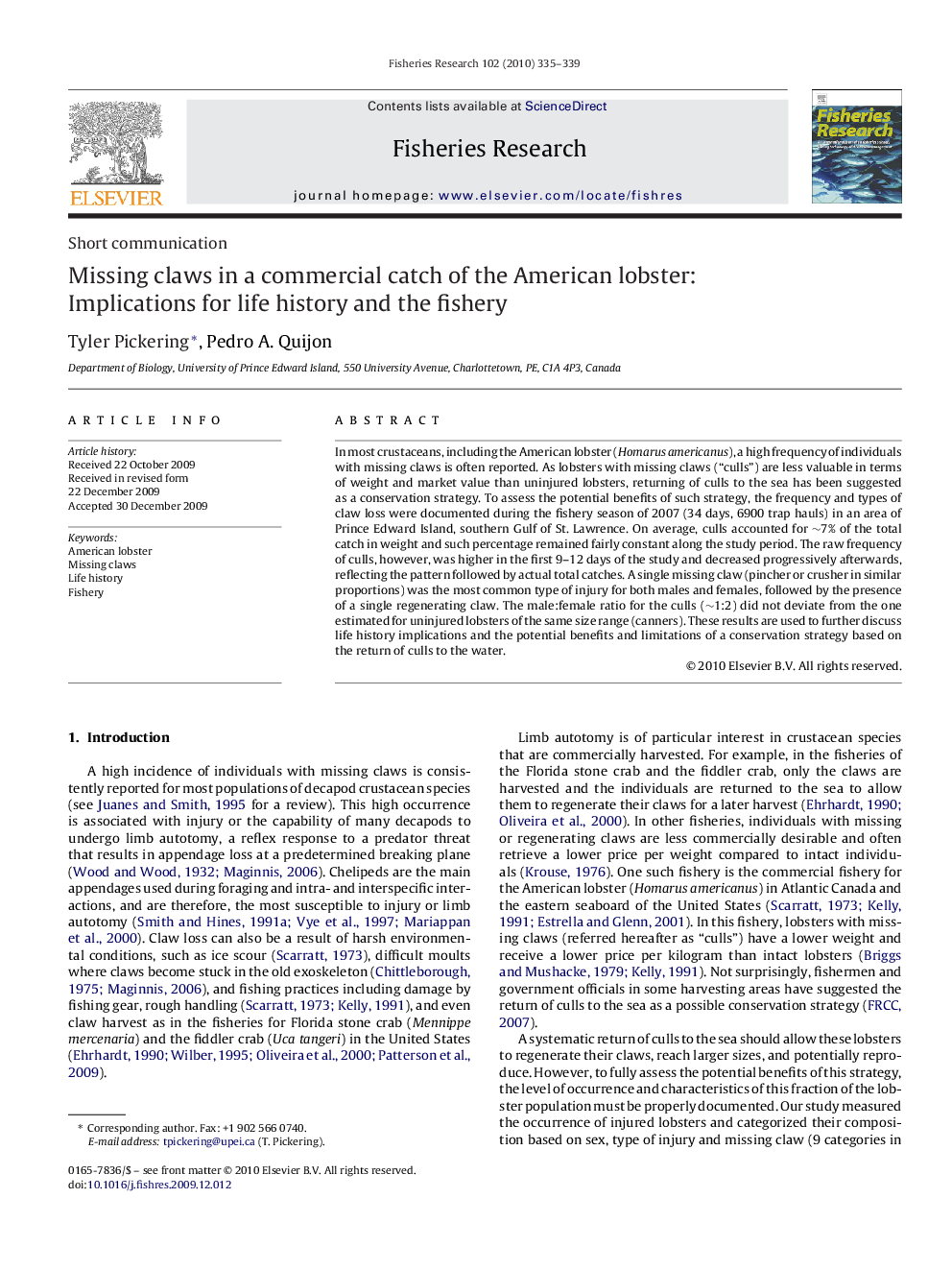| کد مقاله | کد نشریه | سال انتشار | مقاله انگلیسی | نسخه تمام متن |
|---|---|---|---|---|
| 4544047 | 1327176 | 2010 | 5 صفحه PDF | دانلود رایگان |

In most crustaceans, including the American lobster (Homarus americanus), a high frequency of individuals with missing claws is often reported. As lobsters with missing claws (“culls”) are less valuable in terms of weight and market value than uninjured lobsters, returning of culls to the sea has been suggested as a conservation strategy. To assess the potential benefits of such strategy, the frequency and types of claw loss were documented during the fishery season of 2007 (34 days, 6900 trap hauls) in an area of Prince Edward Island, southern Gulf of St. Lawrence. On average, culls accounted for ∼7% of the total catch in weight and such percentage remained fairly constant along the study period. The raw frequency of culls, however, was higher in the first 9–12 days of the study and decreased progressively afterwards, reflecting the pattern followed by actual total catches. A single missing claw (pincher or crusher in similar proportions) was the most common type of injury for both males and females, followed by the presence of a single regenerating claw. The male:female ratio for the culls (∼1:2) did not deviate from the one estimated for uninjured lobsters of the same size range (canners). These results are used to further discuss life history implications and the potential benefits and limitations of a conservation strategy based on the return of culls to the water.
Journal: Fisheries Research - Volume 102, Issue 3, March 2010, Pages 335–339